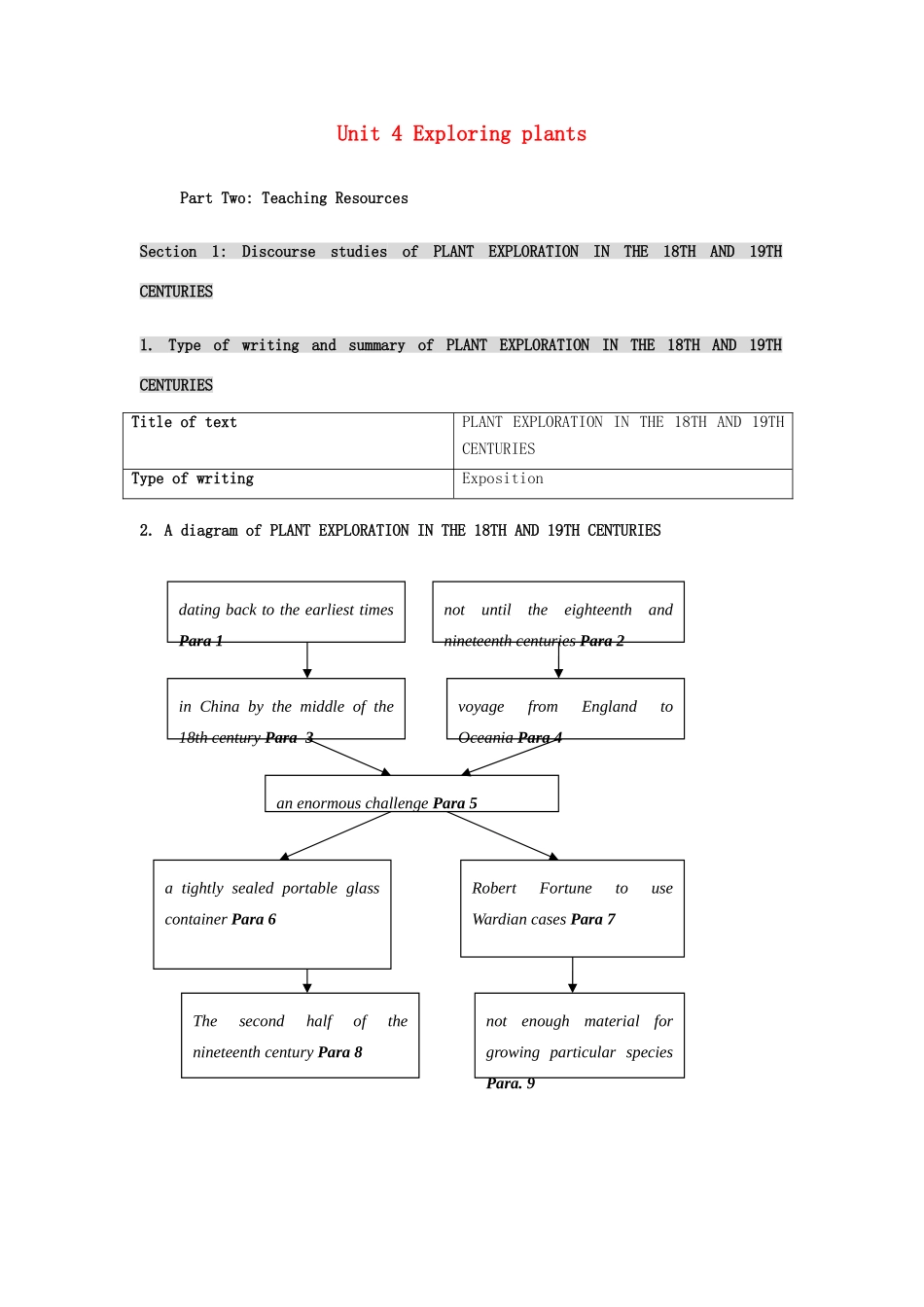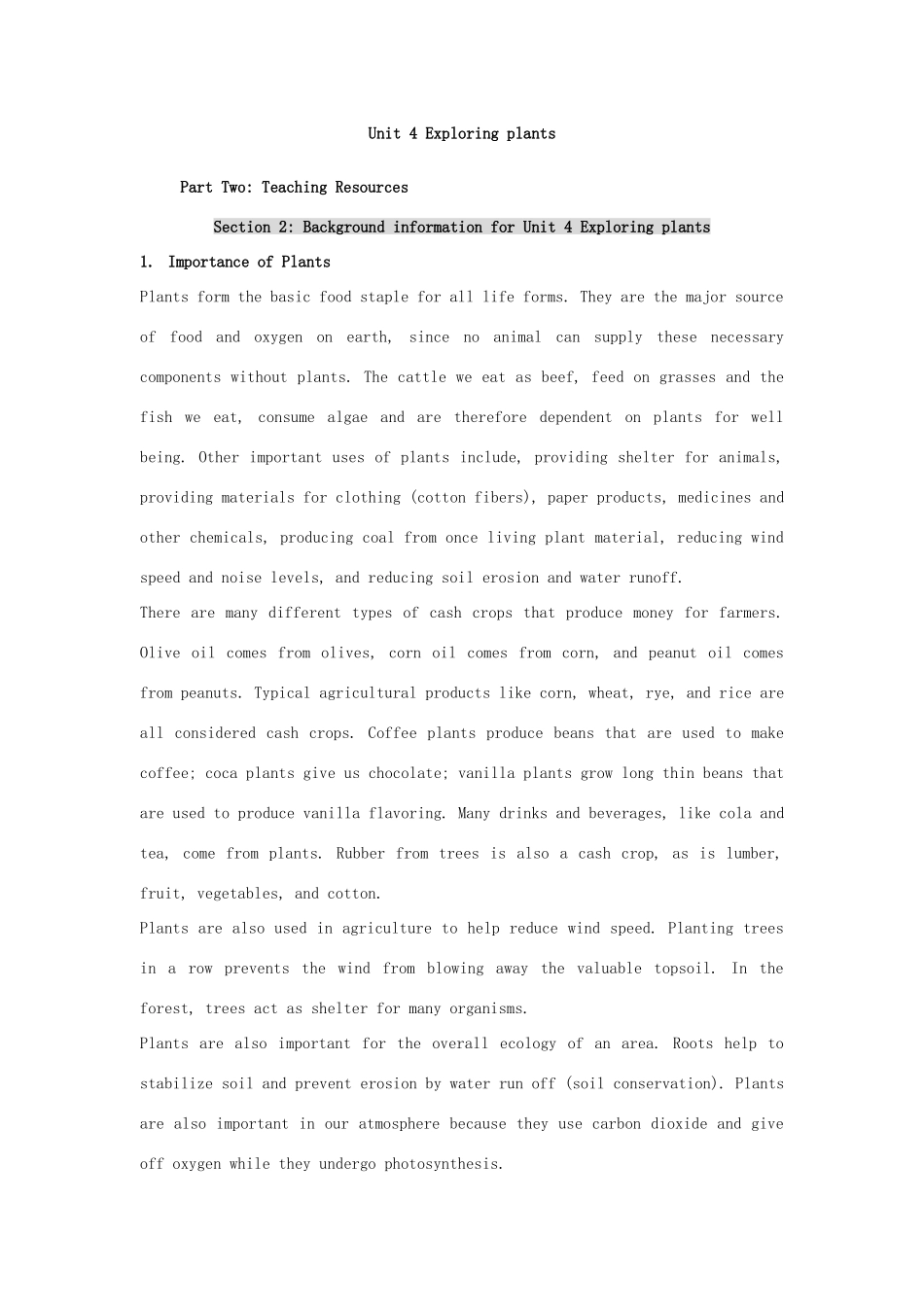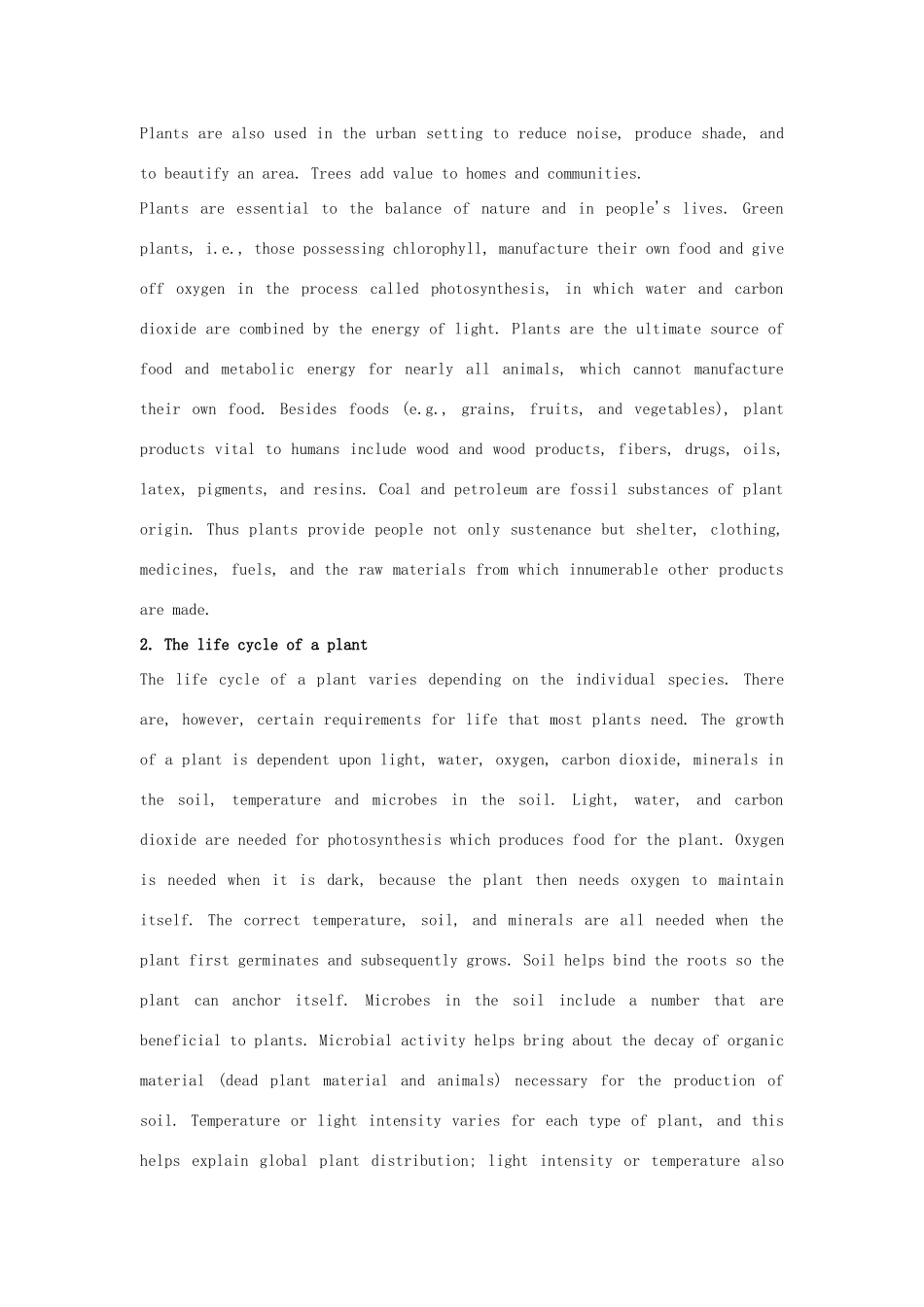Unit 4 Exploring plantsPart Two: Teaching ResourcesSection 1: Discourse studies of PLANT EXPLORATION IN THE 18TH AND 19TH CENTURIES1. Type of writing and summary of PLANT EXPLORATION IN THE 18TH AND 19TH CENTURIESTitle of textPLANT EXPLORATION IN THE 18TH AND 19TH CENTURIESType of writingExposition2. A diagram of PLANT EXPLORATION IN THE 18TH AND 19TH CENTURIESdating back to the earliest times Para 1not until the eighteenth and nineteenth centuries Para 2in China by the middle of the 18th century Para 3voyage from England to Oceania Para 4an enormous challenge Para 5The second half of the nineteenth century Para 8not enough material for growing particular species Para. 9Robert Fortune to use Wardian cases Para 7a tightly sealed portable glass container Para 6Unit 4 Exploring plantsPart Two: Teaching ResourcesSection 2: Background information for Unit 4 Exploring plants1. Importance of PlantsPlants form the basic food staple for all life forms. They are the major source of food and oxygen on earth, since no animal can supply these necessary components without plants. The cattle we eat as beef, feed on grasses and the fish we eat, consume algae and are therefore dependent on plants for well being. Other important uses of plants include, providing shelter for animals, providing materials for clothing (cotton fibers), paper products, medicines and other chemicals, producing coal from once living plant material, reducing wind speed and noise levels, and reducing soil erosion and water runoff.There are many different types of cash crops that produce money for farmers. Olive oil comes from olives, corn oil comes from corn, and peanut oil comes from peanuts. Typical agricultural products like corn, wheat, ry...


